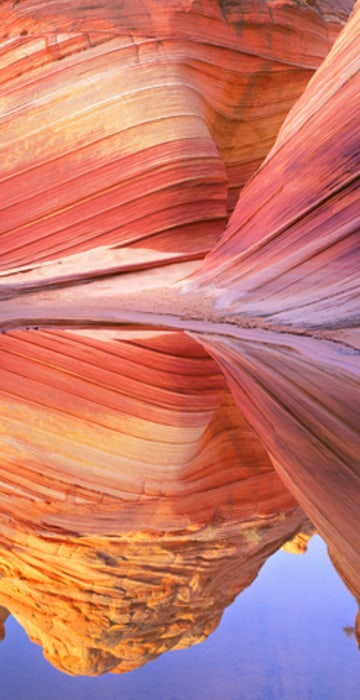
Environment
‘Best of’ nature for Earth Day
View 10 of the 40 images chosen by a wildlife photographers’ group as the “best ever.”
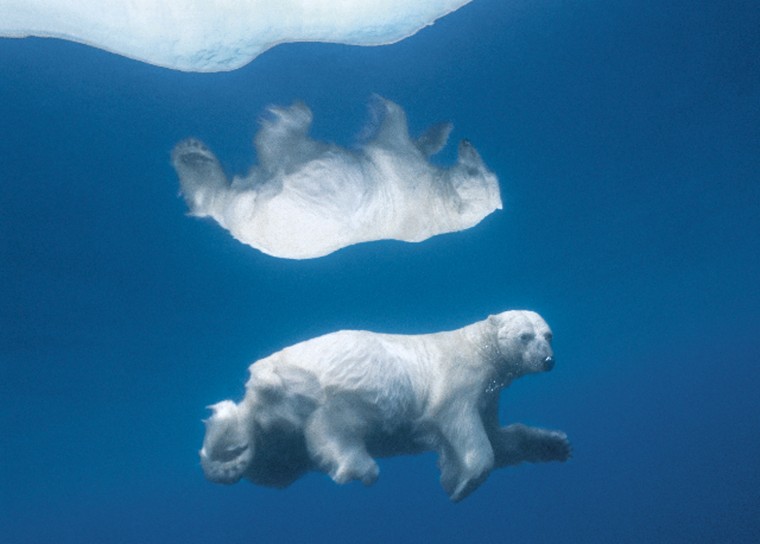
Seeing Double
The top 40 nature photos of all time? In honor of the 40th annual Earth Day on April 22, members of the International League of Conservation Photographers chose their top 40, including this one here. Many of the honored photographers or their trusts went on to donate their work for an Earth Day auction benefiting environmental groups.
Ten of those 40 are shown here, including this one by Paul Nicklen of a polar bear and his reflection. Polar bears often travel submerged -- a tactic used to surprise prey -- and this one was spotted at the northern tip of Canada's Baffin Island. Scientists fear melting sea ice habitat due to global warming could drive polar bears to extinction sometime this century.
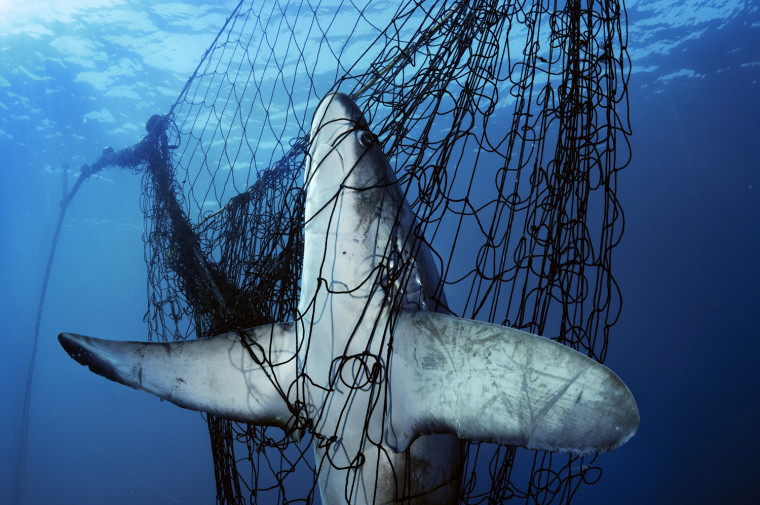
Fished for Fin
Underwater documentarian Brian Skerry photographed this thresher shark, doomed by a gill net, in Mexico's Gulf of California. It had been killed for its fin in order to satisify Asian demand for shark fin soup. Conservation groups estimate 100 million sharks are killed yearly for their fins.
More than 100 photographers and editors associated with the photographers' group were asked to submit nominations for images they felt were “the best” in whatever way they chose to define it. The only restriction: no self-nominations. They were encouraged to consider factors such as aesthetics, uniqueness, historical and scientific significance or contribution to conservation efforts.
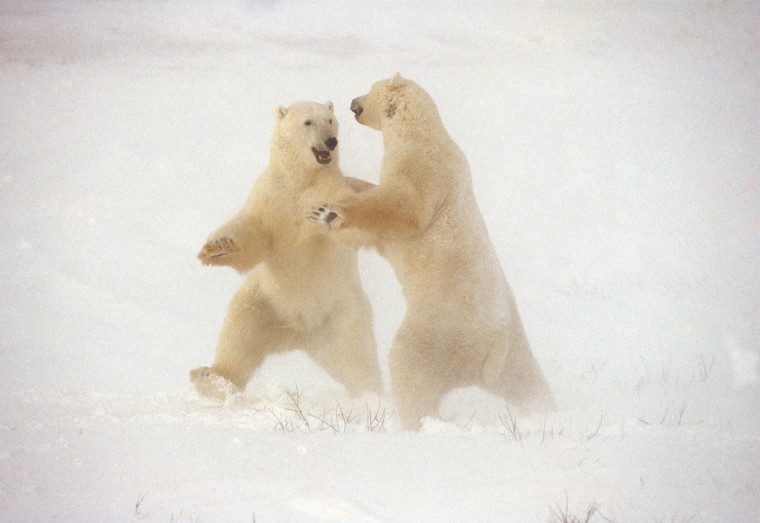
Polar Dance
"Cape Churchill is the largest gathering of polar bears on Earth," photographer Thomas Mangelsen says of the area in Canada's Hudson Bay. "Here the relatively solitary bears come together and socialize waiting for the temperatures to drop and the ice to freeze. As the winter storm approached the cape, during near whiteout conditions, two adult polar bears test each other's strength in what is known as play fighting. ... It not only keeps them fit and establishes a hierarchy, but to any viewer it is obviously something the bears enjoy."
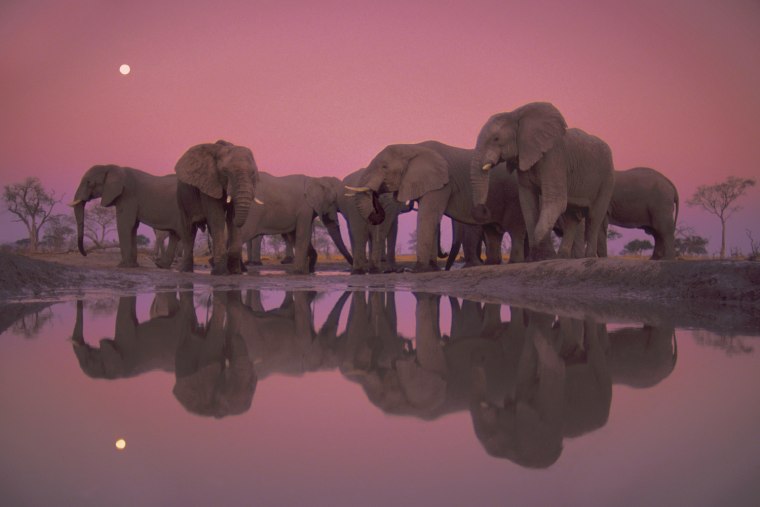
Twilight of the Giants
"During the year I spent living in the Okavango Delta of Botswana, I worked at night for periods of time, waking up at sunset to follow animals through the hours of darkness," says photographer Frans Lanting. "I often started the evening at a favorite water hole where I hunkered down by the edge and made myself a fixture in the landscape. Elephants moved around me in the waning light like shadowy forms. One evening a herd of bulls gathered across the water from me, rising above their reflections under an October moon, in a primeval scene of ancient Africa."
"The existence of huge free-roaming herds of elephants in Botswana is a symbol for both the nature of this landscape and for the human decisions that must be made about the fate of wild places and wildlife both here and elsewhere on earth," he adds. "How we balance those interests will be the legacy of our time, the path we leave on the land."
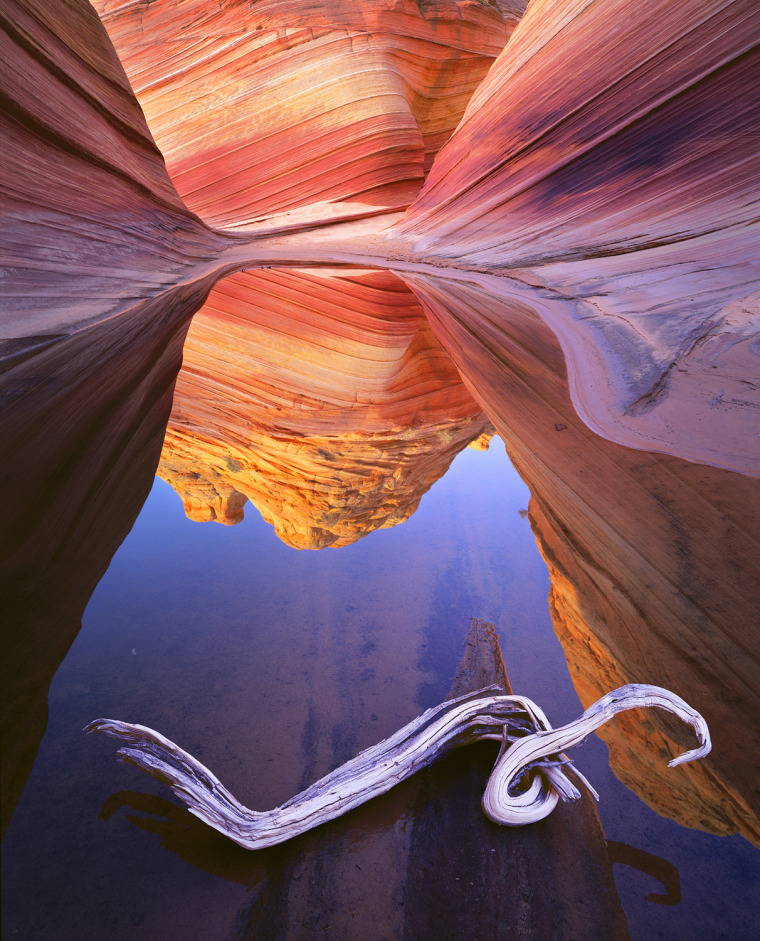
Stone Canyon
Pulitzer Prize winning photojournalist Jack Dykinga made this photograph of petrified sand dunes at Paria Canyon, in Arizona's Vermilion Cliffs Wilderness Area. A book with his work was part of a campaign to create national monuments there. Following the creation of the Grand Staircase-Escalante National Monument and Vermilion Cliffs National Monument, then Interior Secretary Bruce Babbitt sent Dykinga a letter of thanks, noting the book's help in raising public awareness.
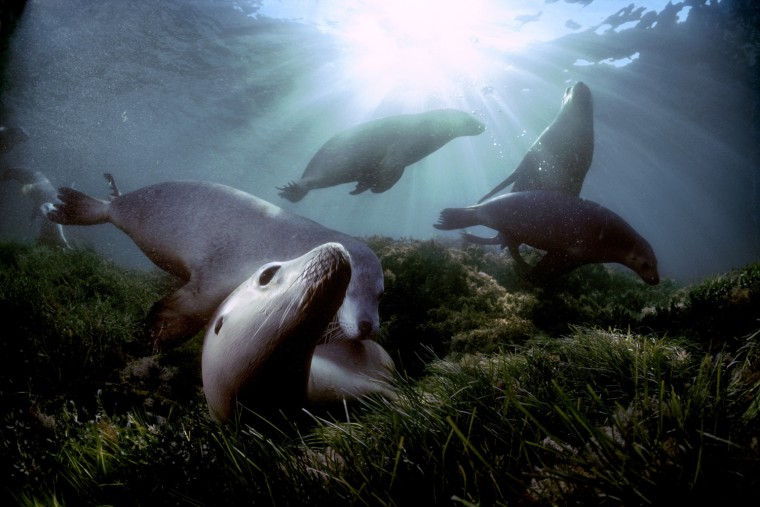
Playful to a Point
"While I was photographing them the leader of the group stood straight up and looked around and then swam straight and fast for the beach with the entire group following," photographer David Doubilet says of his encounter with these sea lions off Australia's Little Hopkins Island. "The sea was still and quiet and something told us that maybe we should leave too and we climbed into our boat just as a great white shark came into view. The Australian sea lion is one of the rarest and most endangered pinniped in the world."
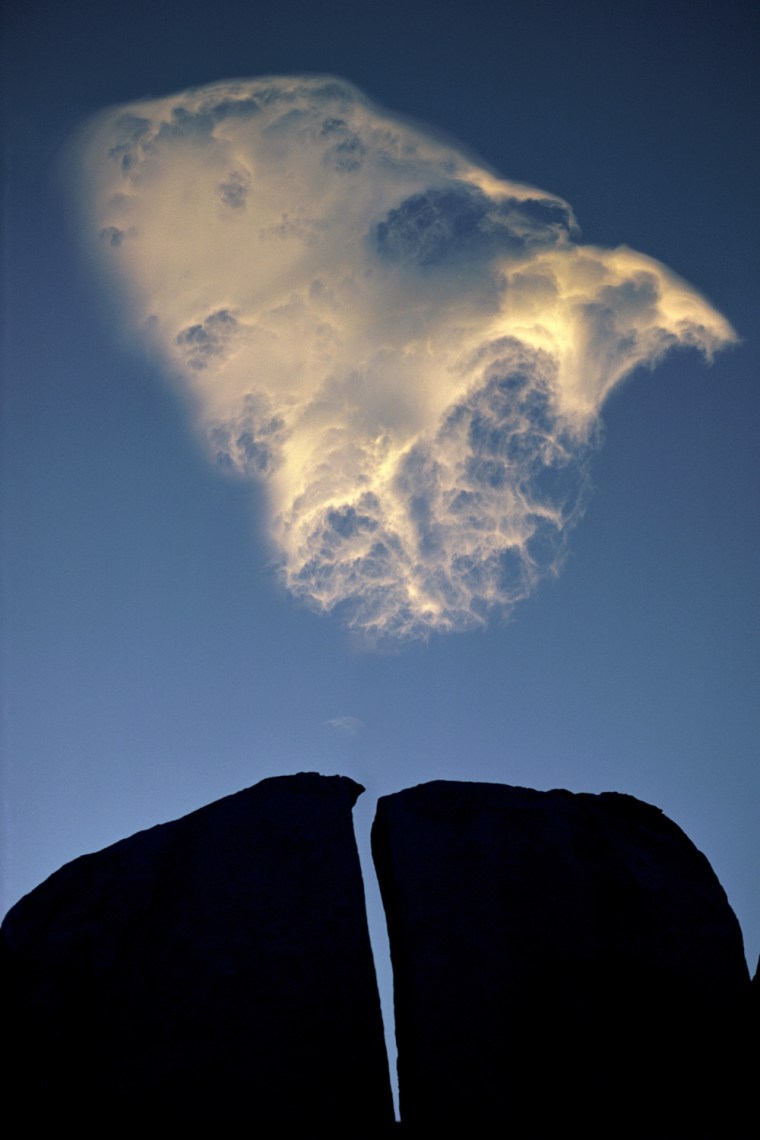
Split Rock and Cloud
The late Galen Rowell saw this cirrus cloud while climbing one 1976 evening in the Buttermilk region of California's Eastern Sierra Nevada. Aiming to incorporate a sense of the boulder-strewn granite landscape around him, he traversed the rugged landscape until he saw this boulder -- waiting just 30 seconds after setting up his tripod-mounted camera before the cloud floated through the perfect position.
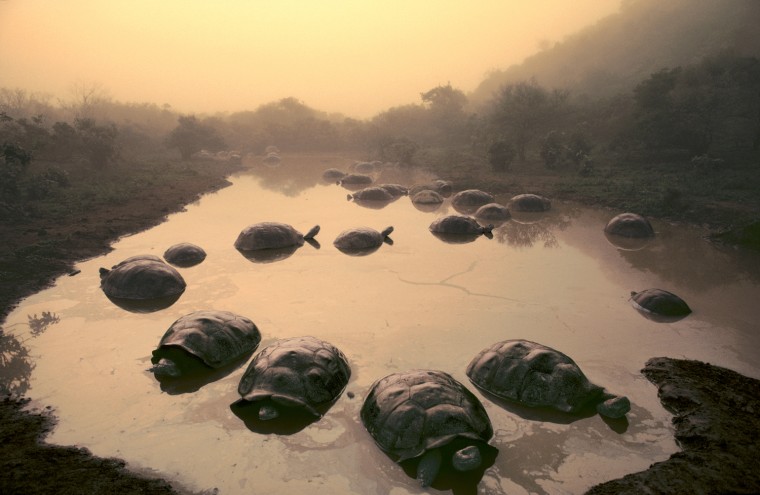
Tortoises at Dawn
The giant tortoises of the Galapagos Islands "are the creatures that provided Darwin with the flash of imagination that led to his theory of evolution," says Lanting. "Inside the Alcedo volcano on Isabela Island, an earlier era lingers. This caldera is sealed off from the outside world by steep lava slopes that rise to 3,860 feet on the equator. It was not until 1965 that an Ecuadorian biologist found a way down inside and discovered a world where giant tortoises roamed in primordial abundance. This group had presumably never seen humans. They hadn't seen many more when I entered the time capsule of the caldera. For one memorable week, I lived among the tortoises of Alcedo."
"The tortoises were resting in a pond as soft mist mingled with sulfur steam from nearby fumaroles and dust from an erupting volcano to the west, and I was able to create an image that evokes the era when reptiles dominated life on land."

Water Lilies
"During my work in Botswana's Okavango Delta, I looked for ways to capture the essence of this great wetland," says Lanting. "The Okavango covers thousands of square miles, but it is really just a thin sheet of water stretched across the sands of the Kalahari. The delta's water lilies drew me in because they symbolize life made possible by water in this dry land."
"One day I looked down in a clear lagoon and noticed how a patch of lilies was anchored in desert sand. An idea took hold. I plunged into the swamp. Actually, I slipped in. Quietly. Crocodiles abound here. While an assistant stood guard in a small boat, I sank to the bottom with a camera encased in a bubble-shaped underwater housing. I held my breath on each dive, which allowed for less than a minute at the bottom. It took many attempts and the better part of a day for the image to become refined."
"The water was only a few feet deep, but the lilies reached for the sky."
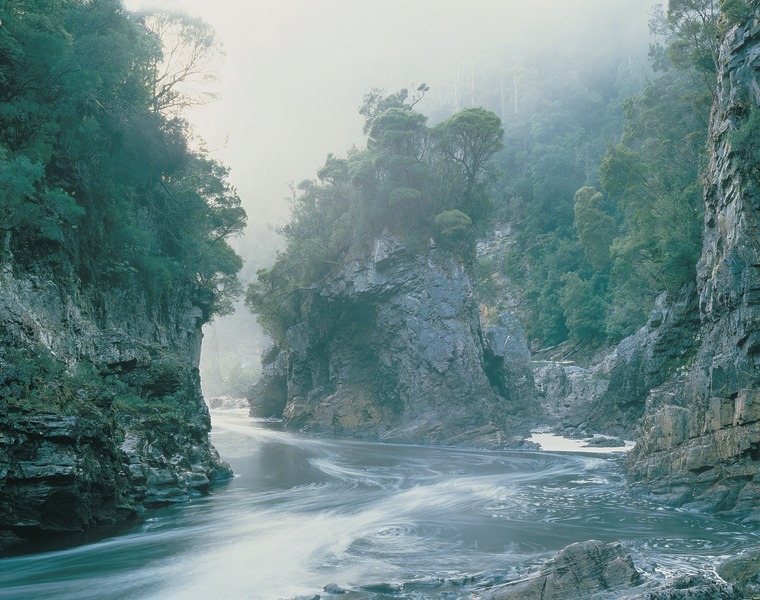
Morning Mist
This photograph by Peter Dombrovskis was instrumental in stopping a dam project along the Franklin River in Tasmania, Australia. First published in "The Australian" newspaper, it sparked a public outcry. Later, Australia's high court declared the proposed dam illegal.
The charity auction is being held at Christie’s, www.christies.com, and select items will be available through May 6 at www.ABidtoSavetheEarth.org. Christie’s said it was waiving all fees and commissions for the auction.